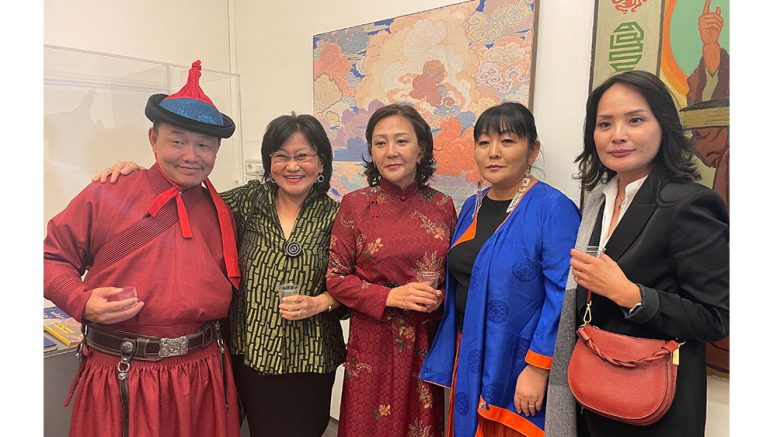The world’s foremost authority on Mongolian art, Dr. Urchanchimeg (Orna) Tsultem, is an associate professor at Indiana University’s Herron School of Art and Design. Tsultem is not only an historian of Mongolian art, but also the first Mongolian curator active in the field since 1993.
And she lives in Carmel.
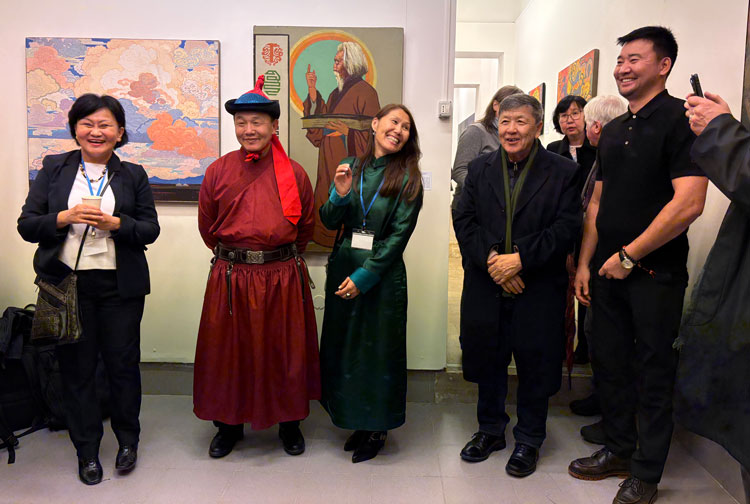
Photo provided
The Reporter recently spoke to Tsultem about her life and work.
In 2019, after getting a position with Indiana University, Tsultem and her husband moved to their new Hamilton County home.
“We lived a couple of months in Indianapolis, and we were hunting for a home,” Tsultem said. “Then we saw this house in Carmel, and we loved Carmel. We moved here in March 2020, right before pandemic, so we were very fortunate. We were locked in Carmel, and we were very fortunate because we have nice, beautiful landscapes around. I continue to enjoy our life. My husband is Italian American, and we enjoy the Christmas market and all these little communities. We love Carmel, we love Hamilton County.”
Tsultem credits Indiana University’s interest in Central Eurasian studies as one of the man reasons she lives in Indiana.
“Indiana University is world renowned for the study of people such as Mongolia, which are little known,” Tsultem said. “It has the oldest program of teaching Mongolian language and courses about Mongolian history and culture non-stop since 1960. We have this world-renowned institution right here where this marginalized culture has been taught for many, many years.”
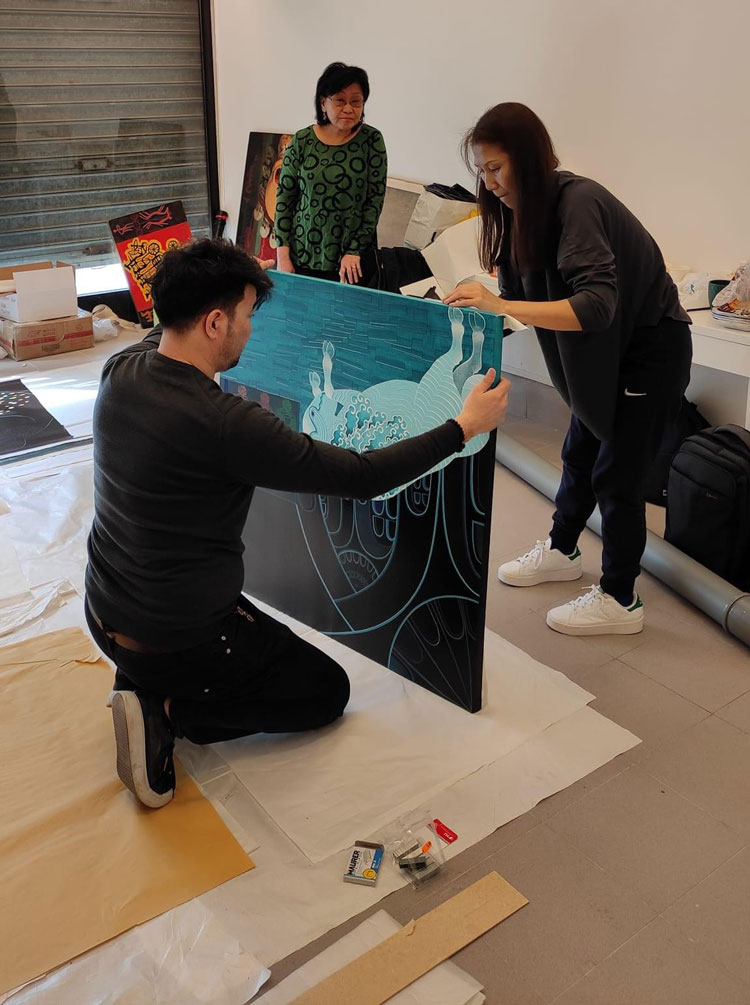
Photo provided
Tsultem was born and raised in Mongolia, where she grew up in an artist family.
“My father was an artist and I grew up seeing him painting and sketching and drawing,” Tsultem said. “I was stunned how the paintings were coming to life – seeing the progress of them. This was really the first passion that I developed, when I was sort of watching and being part of his progress.”
Tsultem’s father did not own a studio, so a room in their home was converted into one.
“I still had those vivid memories of when I was a child when I went to Europe to study art history,” Tsultem said. “I also realized how little it is known about Mongolian art, and that was another ‘aha!’ moment in my life when I realized that I should dedicate my interest towards this art which is so little known.”
Most people know of Mongolia through the name Genghis Khan and the empire he built in the 13th century.
“During his lifetime, as well as his sons and grandsons, it was the largest empire the world had known,” Tsultem said. “The whole 13th century is known as the Mongol century, and of course there’s historical knowledge of the Mongol empire. There are movies also about Marco Polo, Kublai Khan, Genghis Khan and so on, but our museums are not doing a very good job of introducing the art of these people who are so enigmatic. They were very successful in these military conquests of different cultures, and wherever they went, wherever the Mongol armies went, art prospered. Art was flourishing in Persia at the time, art was flourishing in China and so on and so forth, but what was art for the Mongols? It’s not very well-understood, and I think part of the issue is that our museums don’t have too many Mongolian art pieces, and we don’t have too many experts around. That’s the reason why Mongolian art is so little known.”
One of the ways Tsultem is helping to fix that gap in the world’s knowledge is with an exhibition she developed in April, which was shown in Venice, Italy, for seven months and closed two weeks ago.
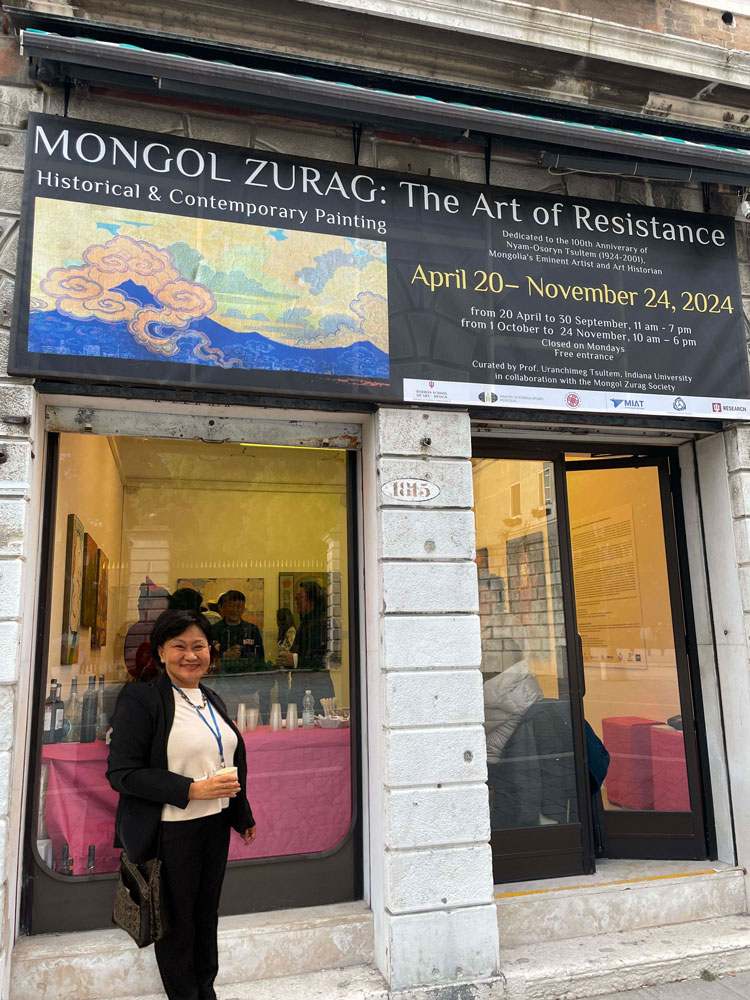
Dr. Tsultem’s Mongol Zurag: The Art of Resistance exhibit was on display through Nov. 24. (Photo provided)
Through Mongol Zurag, an artistic tradition rooted in defiance of Soviet rule, the exhibition critiques the environmental damage resulting from Mongolia’s current neoliberal policies, confronts abuses of power, and powerfully advocates for preservation. Tsultem introduced the curatorial practice to Mongolia and is committed to raising the profile of Mongolian art – which has been historically underrepresented, particularly in the West. This exhibition is especially personal as it includes works by her father, Nyam-Osoryn Tsultem, a foundational figure in Mongolian art history.
“It ended with a nice conference because Marco Polo’s 700th anniversary is also celebrated in Venice,” Tsultem said. “This exhibition is titled ‘the art of resistance.’ I showed four brilliant artists, including my own father. I also showed how art is sort of visualizing this critique and resistance towards power and environmental damage.”
In the past century, Mongolia had a socialist government. Mongolia was the second socialist country in the world after the Soviet Union (USSR). It was strongly influenced both economically and culturally by the USSR. While Mongolia was independent country, it was economically dependent on the USSR.
“It was part of the Eastern European Soviet Bloc and in 1990 became a young democratic nation,” Tsultem said. “It is sandwiched between China and Russia but it considers the United States as a third neighbor. With that political change, a lot of transformations happened. It’s not only Mongolia that has gone through transformation with the influence of a multi-party capitalist market economy, but also the United States. The United States is now opening new classes at different universities for teaching the language and there is slow, gradual movement towards including Mongolia, in especially humanities and arts.”
Because of its proximity to Russia and China, Mongolia has always been significant in politics.
“In the past couple years, I think it’s even more important,” Tsultem said. “I think the understanding of Mongolian culture – and Mongolian art especially – hopefully will contribute towards understanding generally about the geopolitics of the region.”
You can learn more about Dr. Tsultem online at artmongolia.org, and more about her Venice exhibition at tinyurl.com/MongolZuragVenice.
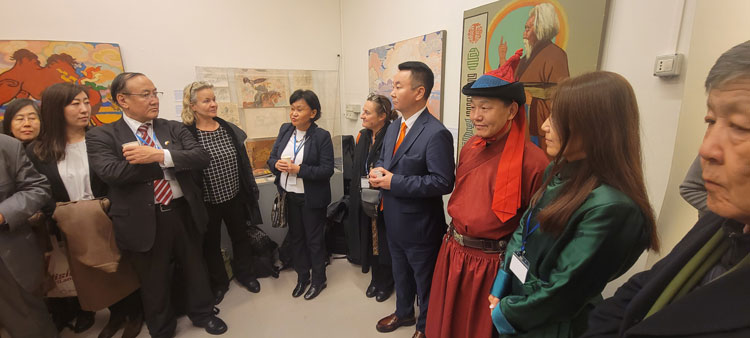
Photo provided

